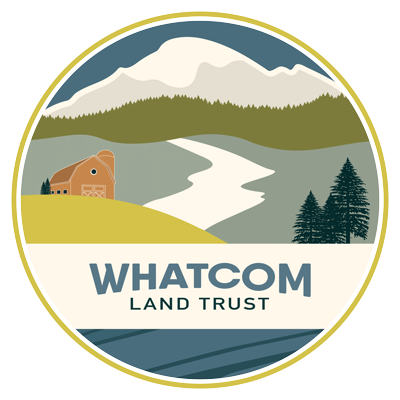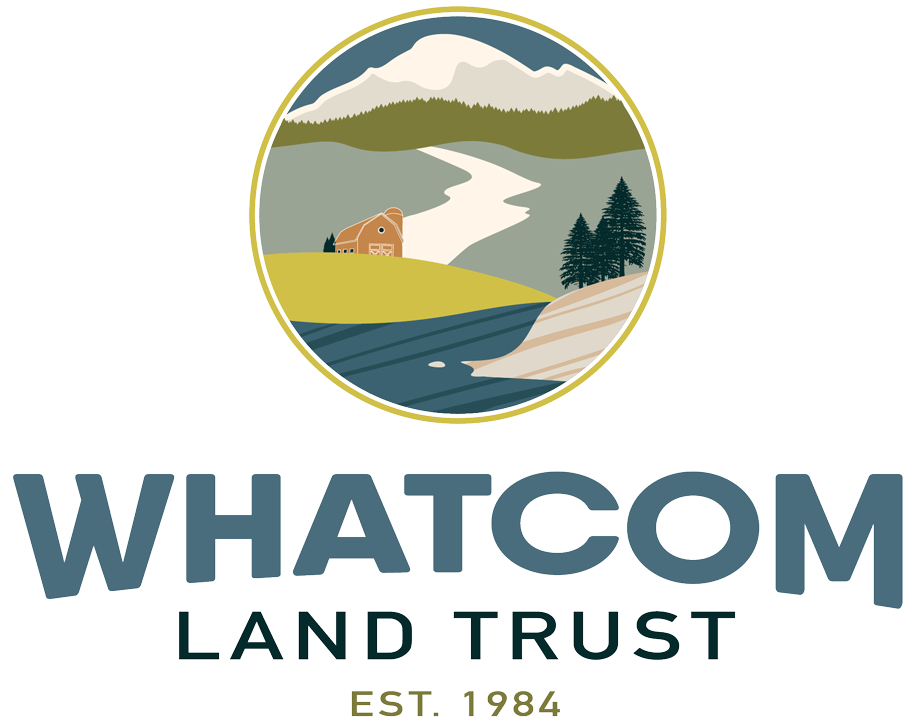Here in Whatcom County we are surrounded by lush forests, flowing rivers, and an abundance of fish and wildlife. The resources provided by this land play a large role in our quality of life here and protecting them is key in maintaining the Whatcom County we love. As our summers are becoming increasingly hotter and drier, and as droughts, flooding and even fires are more evident here in the Pacific Northwest, the need to protect our intact resources is clear. All over the world people are experiencing these changes, however Whatcom County may prove to be an area where we can potentially limit the impacts seen all around us and have hope for future generations of people who will call this place home.
Resilience in the South Fork
The South Fork Nooksack River Valley (SFNV) truly is a special piece of our County. The collaboration of farming, forestry, and salmon represents arguably the three most influential industries within Whatcom County. Neighbors, landowners, and people who work the land here are noticing warmer, drier summers and less snowpack on the Twin Sisters in the winter. In the Valley, the impacts of these changes have been noticeable in the form of increased flooding events during the winter and spring, lower water volume in the river during the summer months and less salmon coming back each year.
The residents of the SFNV, many a part of the agriculture community, have already started taking steps in the right direction towards becoming more informed and involved with addressing the water issues they face every day. Every community member within the SFNV relies on the health of the South Fork Nooksack River. The South Fork Watershed Education Committee hosts educational forums for members of the community concerning issues related to water quality and usage in the Valley. These forums have been well attended and show how much this community cares about protecting the South Fork Nooksack River and its watershed.
To help clarify the needs of the SFNV, the Washington State Department of Ecology (DOE) recently released a Total Maximum Daily Load (TMDL) study for the South Fork Nooksack River. This study examined temperature impairment in the River and looked at the causes of this issue as well as exploring solutions which could mitigate the impacts of rising water temperatures. The study found that the most influential actions to slow these impacts are riparian restoration, floodplain connection, wetland restoration, and placement of log jams. Trees shade the river and stabilize the banks to reduce erosion, wetlands and marshes provide cold water to the river year-round, and woody debris slow the river in flooding events as well as provide deep pools for fish to hide. These three components are critical to the health of the South Fork.
Skookum Creek
Whatcom Land Trust’s upcoming purchase of Skookum Creek, the South Fork’s largest tributary, has the potential to provide excellent climate resilience and wildlife refuge for the entire South Fork Watershed. Flowing through narrow valleys, the riparian zone here is extremely influential to the health and temperature of both Skookum Creek and the South Fork. Skookum’s headwaters are located in the foothills of the Twin Sisters as well as in Musto Marsh, a high elevation wetland complex which provides the creek with cold water all year long. Wide, healthy riparian buffers and high elevation headwaters allow fish and wildlife in the South Fork watershed a safe place in our ever changing climate.
Luckily there is hope for the future of the SFNV and it comes from the incredible community of neighbors willing to work hard protecting this precious resource. As one of those neighbors, Whatcom Land Trust is committed to working with others on the protection and restoration of Skookum Creek and its headwaters as an enduring investment for the future of a healthy and prosperous Whatcom County.


